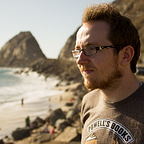Breaking Into Vietnam’s Creepy Abandoned Water Park
Around three hours north of Hoi An, a bustling tourist town in central Vietnam, lies the ambitious and ultimately failed Hồ Thuỷ Tiên Water Park. Partially opened in 2004 after an investment of more than US$3 million by Hue Tourism, the park was meant to increase tourism and bring visitors into the nearby town of Hue, but like a number of other ambitious tourism projects in Vietnam, it was doomed to failure.
We spoke to photographer Chris Staring, who set out to find the abandoned park earlier this year while trekking through Vietnam. The thrill of deserted locations has drawn him in for a number of years — his portfolio includes ghost towns in Belgium, abandoned communist-era relics in the mountains of Bulgaria and ruined Latvian WWII bunkers.
One of his shots, taken in a train graveyard on the edge of the Uyuni salt flats in Bolivia, has surpassed all of his expectations. “The sheer amount of times this shot has been used without my permission and shared liked on Instagram shows how popular the shot is,” he says. “I myself have less than 2,000 followers, yet this single photo has sometimes racked up more than 50,000 likes for some reposters. Even though I am not getting those followers/likes directly, it is nice to know other people can also see the beauty in piles of rusted metal.”
He first heard about the Hồ Thuỷ Tiên Water Park while travelling with a group of backpackers south from Hanoi. “They didn’t know the exact location or address, only that it was somewhere south of the city centre, about 7 or 8 kilometres, and was around a lake. So the first challenge was to find the place.”
With the help of Google Maps and GPS, Staring managed to locate the lake around which the water park had been built and snuck in through a back gate. Others have been forced to pay security guards a bribe to look the other way when showing up at the front gate, he explains.
The sprawling development was difficult to traverse on foot, Staring recalls: “I knew I wanted to explore the whole area. As the park is spread out around a lake it wouldn’t be impossible to explore on foot, but would take a pretty long time, so a bicycle is highly recommended.”
The park used to be home to a family of wild crocodiles, who have recently been transferred to a zoo elsewhere in Vietnam. Now, the park is an empty and lifeless place, and arguably attracts more attention than it would have done had it remained open. A three-story-tall dragon aquarium dominates the park, emerging from the lake like a majestic, long-forgotten beast.
“The main difficulty in getting the shots was being careful not to cut myself on broken glass, and rusted metal, as well as keeping an eye out for stray/wild dogs.”
Inside are long-empty aquariums, surrounded by the gigantic ribs of the dragon. “The main difficulty in getting the shots was being careful not to cut myself on broken glass, and rusted metal, as well as keeping an eye out for stray/wild dogs which is always something I am wary of when exploring places like this after being chased several times now,” Staring says.
He has been pursuing a career in photography since 2011, when a trip to Japan opened his eyes to the possibilities of the art. “I discovered my passion for travel and travel photography which allowed me to combine landscape, architecture, street and life photography,” he explains.
The next 12 months were spent on a round the world trip, honing his skills as he went. “I completed a Project 365 where I would choose a single photo I had taken each day, write a blog entry and pin the photo location on a map every single day.”
He encourages any aspiring creative to do the same. “It’s demanding, tough, and time consuming but when you finish you will have an amazing documented year of your life to share and look back on as well as an incredible sense of achievement. By the end your camera will feel like an extension of your arm and you will know what settings to use without even thinking.”
Staring has recently transferred to a mirrorless system from his Canon 60D setup, with an Olympus EM5 Mark II his current weapon of choice, citing portability as his chief concern. “Unfortunately Canon and Nikon have dropped the ball in the mirrorless market,” he says. “I have now switched entirely to a mirrorless system to be able to travel with just carry on luggage.”
Staring has a number of future projects in the pipeline, including a cycling tour around Iceland and a road trip to the US for the solar eclipse in 2017. You can keep up with his work on Instagram or on his website.
This is an edited version of an article that first appeared on Bokeh.
